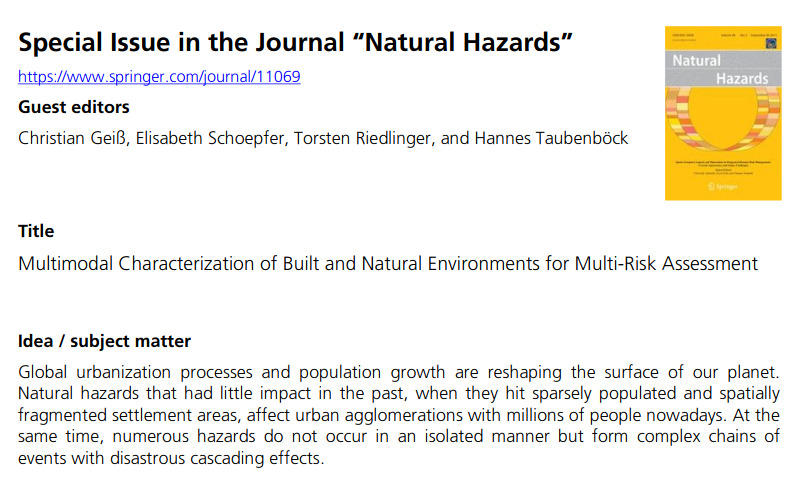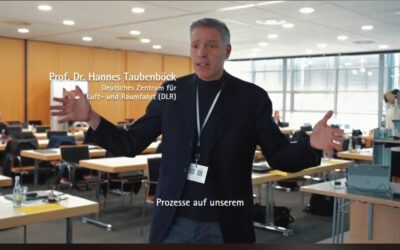Special Issue in the Journal “Natural Hazards”
https://www.springer.com/journal/11069
Guest editors
Christian Geiß, Elisabeth Schoepfer, Torsten Riedlinger, and Hannes Taubenböck
Title
Multimodal Characterization of Built and Natural Environments for Multi-Risk Assessment
Idea / subject matter
Global urbanization processes and population growth are reshaping the surface of our planet. Natural hazards that had little impact in the past, when they hit sparsely populated and spatially fragmented settlement areas, affect urban agglomerations with millions of people nowadays. At the same time, numerous hazards do not occur in an isolated manner but form complex chains of events with disastrous cascading effects. In order to mitigate affiliated perils, detailed information about multi-risk situations is required. However, the quantification of such risks poses major challenges regarding the comprehensiveness of data, tailored analysis methods, and valid modelling techniques. Remarkably, a vast body of technologies emerged over the last decades comprising novel data collections mechanisms and interpretation techniques. Today, sensor data from multiple sources (i.e., modalities) capturing built and natural environments are almost ubiquitously available. This includes ground-based imagery, geo-located social media data, various sources of Volunteered Geographic Information (VGI), as well as earth observation data, among others. To extract relevant thematic information from the data, novel methods related to the field of Artificial Intelligence (AI) and machine learning are increasingly deployed. Consequently, the overall aim of this Special Issue is to inform the multi-disciplinary risk community on the latest developments, capabilities, and limitations regarding the multimodal characterization of built and natural environments regarding risk-related properties (with particular focus on exposure and vulnerability) for usage in multi-risk assessment approaches.
Tentative time schedule
The following time schedule is planned for the special issue:
• Deadline for submission of paper: 30.11.2021
• Last reviews finalized: 30.06.2022
• Final submission to the publisher: 31.07.2022 (review process completed)
• Publication: thereafter
New Earth Observation Project on Thermal Satellite Data
We are honored that we are part of a new research and development project, focusing on the development of a satellite constellation capable of delivering high-resolution thermal data with a high revisit rate. The observations aim to make an important contribution to...









